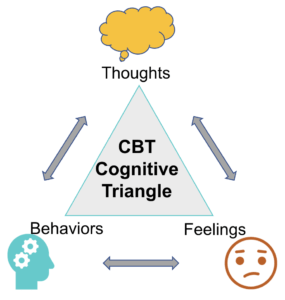The following article is a comprehensive guide on treating gender dysphoria without transition treatment. This book tells you ways to feel better if you are transgender. One way is not to take drastic measures. We hope this will help you understand what it means to live as your true self, even if that doesn’t involve surgical or hormonal intervention.
Contents
What is Gender Dysphoria?
Before we talk about how to treating gender dysphoria without transition treatment, let’s first take a moment to learn what it means.
When someone is born male or female (cisgender), they usually grow up identifying with the sex (and thus, gender) that was assigned to them at birth. However, some individuals feel like their bodies don’t match their true gender. This can make people feel very bad inside. Sometimes it’s so bad that they do something to change their body.
This is what we mean when we talk about “gender dysphoria”. It doesn’t necessarily have anything to do with one’s sexual orientation or interests (i.e., straight or gay).
As for the symptoms, here are some pointers to help you figure out if you might be experiencing gender dysphoria:
- You feel like your assigned sex doesn’t match who you truly are inside; in other words, it feels “wrong” when someone calls you by your name or pronoun (he/she).
- Your gender dysphoria has caused significant distress, to the point where it’s impacting your daily life. For example, if dressing like the opposite sex makes you feel better about yourself; conversely, feeling like you have to dress in a certain way can make things worse.
- You’ve been experiencing these feelings for at least six months.
If you’re nodding your head to most of the above, then it’s safe to say that gender dysphoria is something that you might be struggling with. And if so, transitioning might seem like a very appealing option right now. People have a feeling that they are the wrong gender. There are other ways to change this without making a big decision.
Difference Between Transgender And Transsexual

A transgender person is someone who identifies with a gender different from the one they were assigned at birth. The term transgender covers a broad range of identities, some of which are more visible or recognizable than others. A transsexual is someone whose gender identity does not match the sex they were assigned at birth. They may choose to socially transition from one gender to another or to undergo hormone replacement therapy and/or gender confirmation surgery.
There are several ways in which transgender and transsexual people differ.
One key difference is that transgender people may or may not choose to transition medically or socially, while transsexual people generally identify as wanting to make a full transition to the other gender.
Transgender people also often experience a different kind of discrimination than transsexual people. Transgender people are more likely to face discrimination in every area of life, from employment to housing to health care. Transsexual people often face discrimination specifically related to their gender identity, such as being denied access to appropriate health care or being targeted for violence.
Despite these differences, transgender and transsexual people share many of the same experiences and challenges. They both often face discrimination and misunderstanding from the people around them, and they both struggle to find acceptance and understanding in a world that can be hostile to difference.
It is important to remember that transgender and transsexual people are individuals, each with their own unique experiences and perspectives.
How do you treat Gender Dysphoria without transition Treatment?
Now that we’ve got a better understanding of what gender dysphoria is, let’s talk about how to treat it. In most cases, the first step will be to speak with your doctor or therapist about these feelings. They’ll know best as to whether they can prescribe medication for this, or if therapy is the way to go.
There are a few different types of therapy that are effective in treating gender dysphoria:
Cognitive Behavioral Therapy (CBT)

This type of therapy can help you to change any negative thoughts and beliefs that might be making your gender dysphoria worse. It can be helpful in teaching individuals how to cope with any distress that comes along with this condition.
Family Therapy
This type of therapy helps families learn how to best support their transgender loved ones. It is helpful to prevent any conflict. It is especially helpful if family members don’t understand or accept the individual’s gender identity.
Hormone Therapy

If someone has a condition called gender dysphoria, they may be given medicine to help them feel better in their skin. This therapy involves taking hormones (of the opposite sex) to help align the body with the person’s internal gender identity.
There are other methods of treating gender dysphoria without transition that you can try. One is laser hair removal. Another is breast implants for people who were born as women and now want to be men. And there are injections of testosterone and ectomy, too. However, as we mentioned earlier, not everyone with gender dysphoria will need to transition to experience relief.
Conclusion
Transgender people can find peace and happiness in ways other than transitioning. For example, they can find peace by learning to accept themselves. If you’re struggling with gender dysphoria and don’t know where else to turn next, please reach out – help is available! You may just have what it takes inside of you already. Studies show that most transgender people who do choose hormone therapy or surgery report feeling like they were born into the wrong body. This feeling might be because their brain hasn’t developed yet. So, it’s important not to dismiss these feelings if they’re new to you; chances are, they’ve been there for a while.
If you are looking for affordable Online Counseling MantraCare can help: Book a trial therapy session




